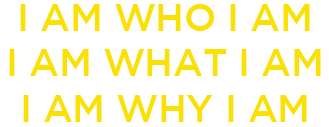01 Apr Seeing With Our Eyes
In October, 1992 I started collecting tribal art. While initially I didn’t imagine tribal art would be expensive, I was soon amazed at how expensive some objects were; some fetching hundreds of thousands of dollars. What made these objects so expensive is that there is a limited supply of “authentic” objects. (Authentic objects are those made by a tribal people for their own use and used accordingly. That’s unlike “tourist” objects made for others and “fakes” made to appear like authentic objects.) Authenticity is essentially the sine quo nom of the collectibles markets generally. Without a limited supply of art objects qualifying as authentic, the art market would collapse. If objects were judged simply by their aesthetic appeal alone, facsimiles that were indistinguishable from authentic objects would flood the market, making authentic objects not worth more than the cost of making a facsimile. Without high-priced collectibles, there would be no collectors spending huge sums to support art museums, auction houses and well-heeled dealers.
Art, as well as everything else, is viewed by our eyes and our mind. Our eyes see things as they see things. As our eyes have no memory, our eyes cannot compare one thing with another. However, while some things engage and appeal to us and some less so, just about everything has a unique beauty to it from some perspective. Our mind cannot see, it can only hear. When we look at an art object in terms of its authenticity, provenance, description and in comparison to other art objects, we are “seeing” through our mind, not our eyes. The art market depends on collectors seeing through their mind, not their eyes.
As a collector I’ve met many dealers. One thing that several said in passing particularly struck me: there have been many well-considered collectors that as they got on in years often sold many of their “top” objects and purchased others that were clearly fakes or of lower quality. Dealers speculated that these old collectors simply lost their “eye;” that is, they could no longer distinguish a fake from an authentic object or they lost their sense of taste and as such were satisfied with lower quality objects. Perhaps or maybe these old collectors finally saw art objects with their eyes, not their mind.
Now, I too am an old collector and appreciate the mindset of the old collectors who were pooh-poohed by dealers and museum people. Someone truly engaged with the art itself (not with art as an investment or status symbol) solely focuses on the aesthetic and engaging aspects of an art object. Whether it’s fake or real is immaterial. Each object is what it is whatever it is; to be appreciated as it is, absolutely, not relative to something else or because it’s dressed in superlatively flattering adjectives. Collectors who’ve come to this realization tend to be older, having spent many lifetimes and considerable sums building their collections. They truly have a great “eye” as they see objects with their eyes, not with their mind.
More generally, beyond art, these older individuals tend to be in Act 3 in the play of life; the transition from their finite material selves to who they were before their birth, one with everything. In the transition, we see beauty everywhere. As to the art market, they shake their heads and laugh at the foolish collectors they once were.

